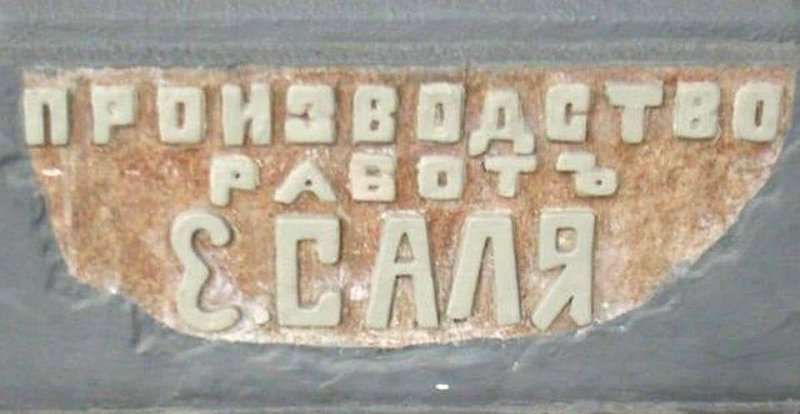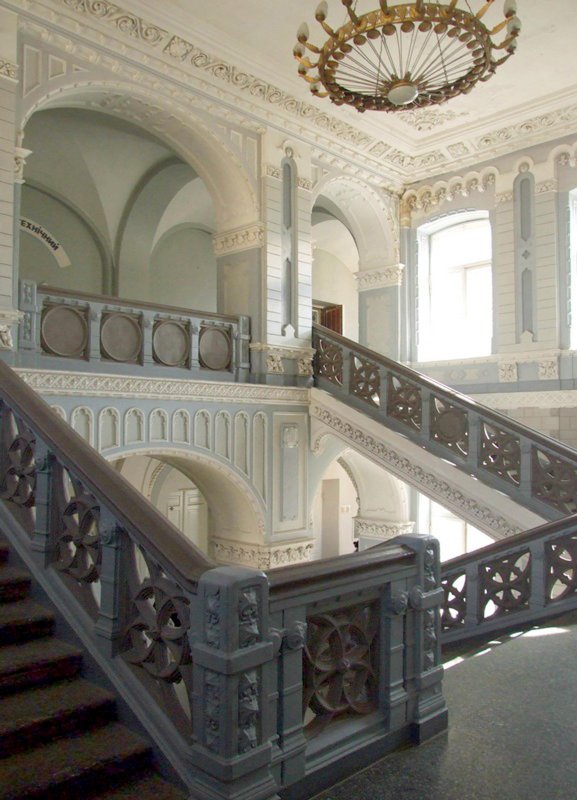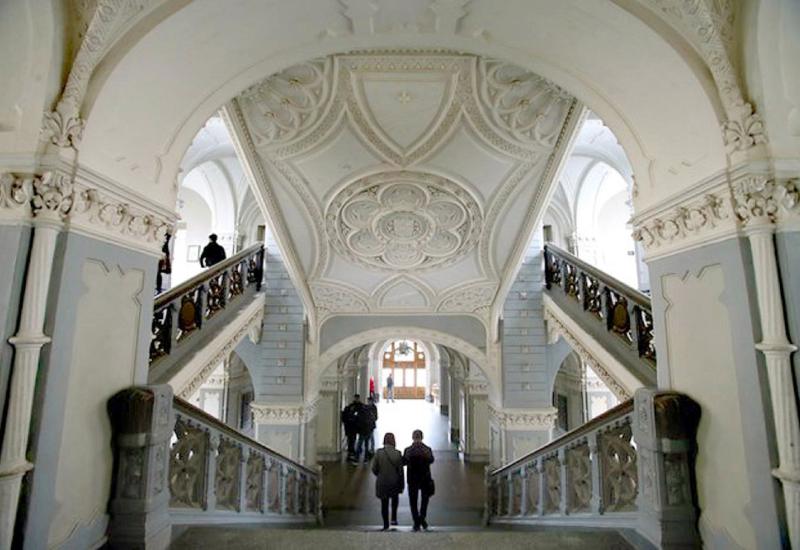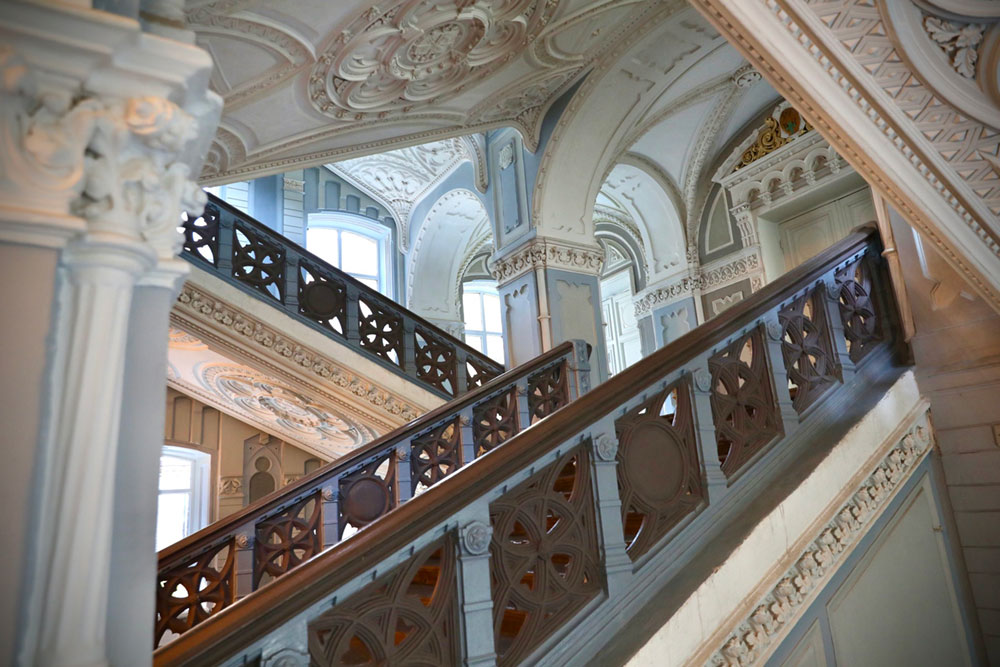Inviting foreign artists to Ukraine is a long-standing tradition. In particular, the most famous Italian artists in Kyiv were Florentine Francesco Bartolomeo Rastrelli in the 18th century (St. Andrew's Church, St. Mary's Palace) and Roman Vincenzo Beretti and his son in the 19th century (red and yellow buildings of the university, the Institute of Noble Maidens, the anatomical theater, St. Volodymyr's Cathedral). The natives of the Apennines did not miss the KPI either.
We usually say that it is difficult to imagine Kyiv without Vladyslav Horodetskyi's creations, and it is true. However, not everyone knows that the sculptor Elio Sala made the moldings on all of Horodetsky's buildings. Can you imagine the House of Chimeras without sculptures-animals, monsters, nereids? It means that Kyiv would be completely different without Elio Sala. By the way, the artist also contributed to the construction of the Kyiv Polytechnic Institute.

His background. Elio Sala was the Italian's original surname. He was born in Milan, in a noble family in 1864, and had three brothers - Paolo, Eugenio and Enea. Interestingly, Elio became a sculptor, two of his brothers became painters, and the youngest, Enea, became a fencing teacher. At the end of the nineteenth century. Elio Sala came to St. Petersburg, where he worked for two years on the decoration of a palace on the Moika embankment. And then he learned that a competition was announced in Kyiv to decorate the City Museum of Antiquities (now the National Art Museum). The avid southerner, inspired by the numerous creations he had seen in his homeland, transferred his inspiration to his project and won the competition. So he and his brothers moved to Kyiv. It is worth noting that not only Kyiv was lucky to have the artist, but Elio was also lucky to skillfully realize the compositions that made him famous and have been admired for over a century.
Transformation. For some reason, in Kyiv, the sculptor changed his surname to Sala. Jokers seriously claim that he did so "in order not to be associated with Ukrainian lard". But researchers have a different opinion. First, they say, the Italian's surname, Sala, translates to hall. Secondly, the change in the Cyrillic spelling of the surname has the least to do with "salo."
Most likely, they switched from transliteration (a principle/method where a letter of another language corresponds to a letter of the Cyrillic alphabet) to orthoepy (i.e., they used Cyrillic letters to convey how the surname sounds in Italian). And in Italian, where "L" is a soft sound, it sounds like "sala". As for the accent - the first or second syllable - the influence of French, which was more widespread than Italian at the time, is assumed.

The Kyiv period. Already in the early 1900s, the central six-column portico of the Museum of Antiquities was crowned with the sculptural composition "Triumph of Art," mythical griffins lurked on the roof of the building, and monumental stairs were saddled with lion sculptures made by Elio Sala. Of course, they wanted to work with him, because at that time a large-scale construction project was underway in the city.
The creative tandem of the Ukrainian architect Vladyslav Horodetskyi and the Italian sculptor Elio Sala lasted for almost a decade and a half. The sculptor decorated the most famous buildings of Horodetsky: the Karaite Kenasa, the House with Chimeras, and the Church of St. Nicholas. Moreover, it was Elio Sala who first began to use castings not from alabaster, which was not very reliable, but from cement. After him, all sculptors began to use this technology.
From publications of the time: "The Sala brothers not only justified the architect's trust, but introduced completely new methods in the casting of stucco decorations and sculpture. Until that time, stucco decorations in architecture were cast from alabaster, a very fragile material, especially in exterior molding. Sala began to use the so-called cement filling. This method means that alabaster is not poured into the mold, as it used to be, but semi-dry mixed cement is poured in. After it dries, the mold is removed and the cement sculpture remains. Before them, this method was not used in Russia. But the Salyas, in addition to their knowledge of the technique, also showed remarkable sculpting abilities. In 10-15 years they enriched Kyiv with a number of highly artistic buildings."
In addition to V. Horodetskyi, Elijah Sala collaborated with other architects. For example, in 1899-1900 he decorated the facade and interior of the foyer and auditorium of the opera house (architect - Viktor Schroeter), in 1902-1905 - the facade and interiors of the Kyiv office of the State Bank, and now the National Bank of Ukraine (architects - Oleksandr Kobelev and Oleksandr Verbytskyi), in 1903-1911 - the Church of the Exaltation of the Holy Cross in Fastiv (architects - Vladyslav Dombrovskyi and Fedir Troupianskyi).
And of course, he left a mark on Kyiv Polytechnic. We read from the "List of Historical and Cultural Monuments of Ukraine, 1999": "All the stucco work in the main building of the KPI was done by the sculptor Elio Sala, whose temporary studio was located in the same building. He also made handrails and balustrades of artificial stone for the main staircase (according to O. Kobelev's drawings), marble window sills, and mosaic floors in the assembly hall and lobby" (vol. 2, p. 949). It should be added that Elio Sala's sculpture studio also made eight plaster bas-reliefs of great physicists in the Great Physics Auditorium. However, they did not survive the Second World War, so now copies are installed in their place.
Elio Sala owned his own artistic, sculptural, and decorative construction studio in Kyiv, living at 34 Instytutska Street (now 14) and 8 Yelyzavetynska (Pylyp Orlyk) Street. But with the outbreak of the First World War in 1914, he returned to Italy. There he was known not only as a sculptor but also as a painter and book illustrator.
By the way, not a single portrait of the sculptor has survived. However, he left two autographs for Kyiv: one on the building of the National Bank, and the other, "E. Sala 1902," can be seen on the street sculpture "Fighting Eagle and Panther" near 10 Bankova Street.
This year marks the 160th anniversary of the artist's birth. So let's remember him with a kind word and admire the beauty he generously gave to our city.


